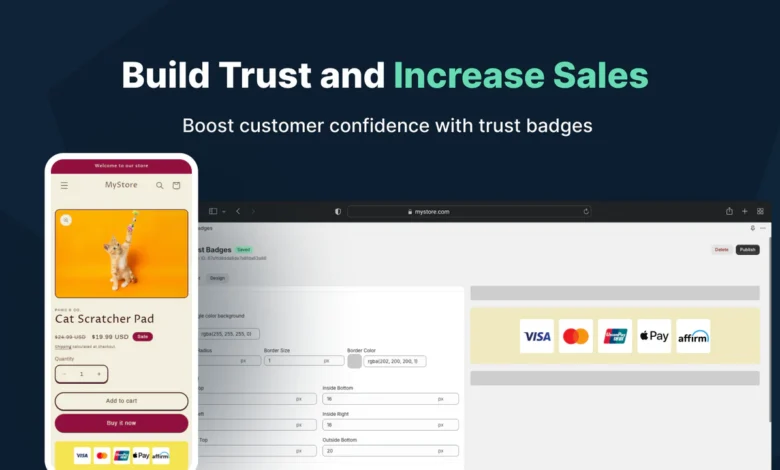Boost User Trust with Custom Status Pages

In today’s digital world, where downtime can lead to lost revenue and damaged reputation, transparency is more important than ever. One of the simplest yet most powerful ways to build trust with your users is by creating custom Status Pages. These public-facing dashboards inform your audience about the current health and uptime of your services in real-time.
Whether you’re a SaaS provider, hosting company, or an e-commerce platform, a status page shows customers that you’re proactive and transparent about service performance. When done right, it turns potential frustration into loyalty, even during outages.
What Are Custom Status Pages?
A custom status page is a branded online dashboard that displays the real-time operational status of your services, apps, or websites. It includes uptime data, outage history, incident updates, and even maintenance schedules. Companies can personalize it to reflect their branding, colors, and tone, making it consistent with their identity.
Unlike a generic error page or tweet during downtime, a status page gives users a single, reliable source of truth about your service availability.
Why Transparency Matters More Than Ever
Downtime is inevitable even for the biggest companies. The key difference lies in how you handle it. If customers are left guessing about what’s wrong or when service will resume, their trust erodes.
Here’s what transparency through a custom status page achieves:
Informs users quickly during outages or maintenance
Reduces support tickets by giving updates without contacting support
Demonstrates accountability and commitment to customer experience
Improves trust even when things go wrong
When users know you’re keeping them in the loop, they’re more likely to remain loyal and patient.
Features of a Great Custom Status Page
Not all status pages are built the same. To truly inspire trust, your custom status page should offer the following:
Real-Time Monitoring Integration
Connect your systems to automatically update the page as soon as downtime is detected.
Incident Reporting & Updates
Explain what’s happening, what’s being done, and when it’s expected to be resolved.
Component Breakdown
Show status for individual services (API, database, login, etc.) so users know exactly what’s affected.
Historical Uptime Data
Show users how reliable your service has been over the past 30, 90, or 180 days.
Custom Branding
Use your own logo, colors, and domain to maintain trust and familiarity.
Subscription Alerts
Let users sign up to receive email or SMS updates when incidents occur or resolve.
How Custom Status Pages Improve User Trust
Reduces Uncertainty
The moment something breaks, users look for answers. If there’s a status page already showing the issue and estimated fix time, it reduces anxiety.
Saves Time for Everyone
Without a status page, users flood support channels with the same questions. This delays resolution and frustrates everyone. A simple dashboard streamlines communication.
Enhances Your Brand Image
Being upfront during an incident reflects professionalism and care. Customers will remember that the next time they choose between you and a competitor.
Encourages Self-Service
Users don’t want to waste time reaching out to support if they can check a quick status update themselves.
5. Builds Long-Term Confidence
Over time, users see your commitment to uptime and transparency, which builds a stronger bond and long-term retention.
Use Case Examples: How Businesses Benefit
Let’s look at some practical applications of custom status pages across industries:
SaaS Platforms: Keep users updated on API health, login services, and data processing systems.
Web Hosting Providers: Let clients monitor uptime across servers, regions, and services.
E-Commerce Websites: Show real-time store availability, checkout system status, and payment gateways.
Educational Platforms: Alert students and faculty if video streaming, exams, or portals go offline.
Mobile Apps: Display backend or server status for users and reduce app store complaints.
Having visible Status Pages in place can even help teams internally, acting as a single source of information for customer support, engineering, and leadership.
When to Create One
The best time to create a custom status page is before something goes wrong. Don’t wait for your first major outage to scramble for communication.
Here’s when you should consider setting up one:
You’re launching a new SaaS product or app
You’re scaling your customer base
You manage multiple microservices or components
You want to reduce support pressure during incidents
You care about transparency and user communication
Mistakes to Avoid with Status Pages
Setting up a status page is easy but avoiding these common mistakes is crucial:
Not Updating During Downtime: Leaving the page stale during an incident defeats its purpose.
Too Technical Language: Use clear, simple terms that any user can understand.
No Branding: A generic status page may confuse usersalways make it match your company’s identity.
Forgetting Subscriptions: Let users opt-in for alerts via email or SMS for better engagement.
Lack of Historical Data: Only showing current uptime misses the opportunity to build long-term credibility.
Read Also: Smarter Living: How Technology is Transforming Our Homes Into Havens
Final Thoughts
Trust is hard to gain and easy to lose especially when your service goes offline. With a custom status page, you provide clear, real-time updates that keep users informed, reduce panic, and prevent support overload.
It’s a simple but powerful tool that shows your users: “We’ve got this under control. Whether you’re just starting out or running a large-scale operation, now is the time to implement your own status page.





